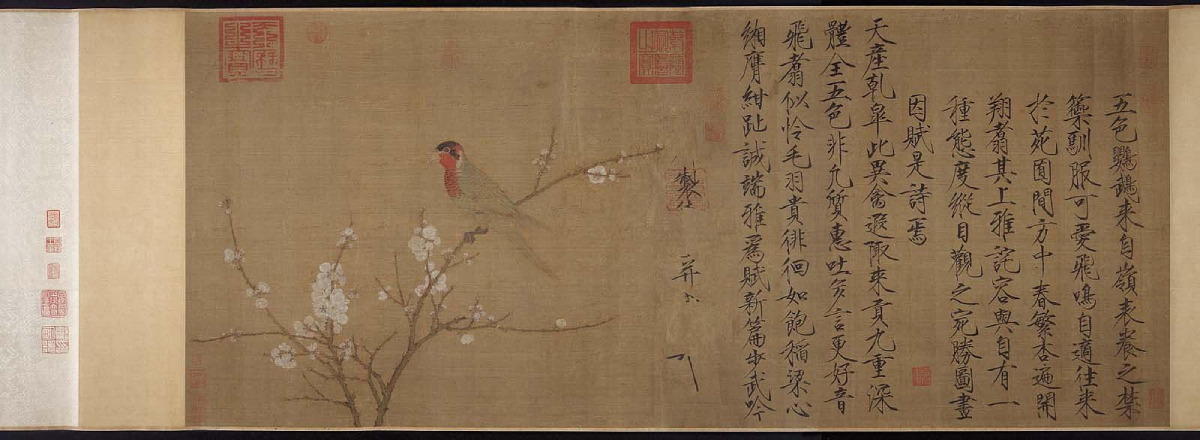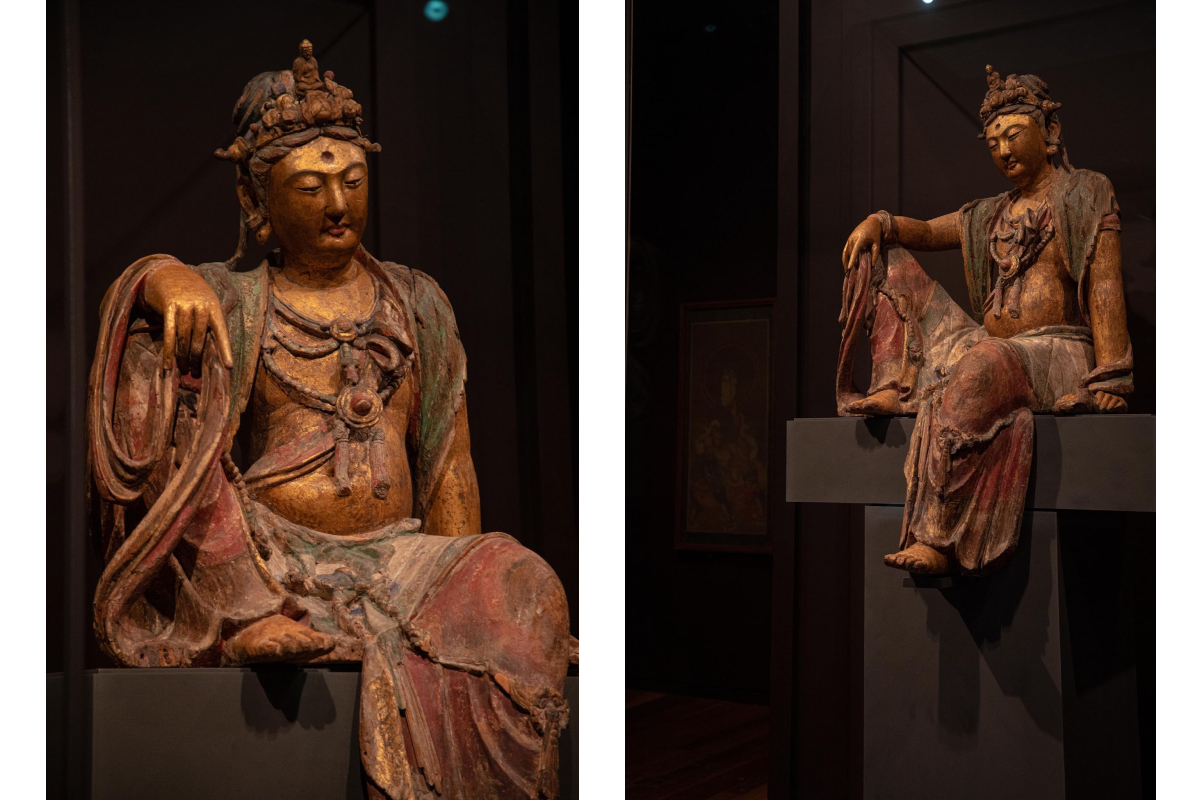
Class Visit to MFA Boston: Exhibiting Asian Arts
Felicia Jiang 24’ is a history major and a philosophy minor. She studies Japanese and Russian and is interested in the history of cross-cultural communications.
In January 2023, I took the class MUX 222 Collecting and Exhibiting Asian Art: Museums as Local, National, and Global Institutions offered by SCMA curator of Asian art Yao Wu. As part of the course, we went on a day trip to the Museum of Fine Art (MFA) in Boston. At the MFA, we explored its Asian art collections, studied their organizational principles, and followed the tours led by two curators and one conservator, Laura Weinstein, Abigail Hykin, and Nancy Berliner.
In the tours, all three guest speakers stressed the need of contextualizing artifacts in exhibitions. In the introduction to Islamic art, the curator, Laura Weinstein, explained how objects on view were connected by a common theme or recurring motif. For example, to echo a stone arched gateway, which was the most eye-catching object in the gallery, she chose to display a painting of people in a garden with an arch next to it. She also juxtaposed two prints with the same composition but distinct cultural backgrounds to highlight the cultural interaction between Europe and the Islamic world. She then brought us to the South and Southeast Asian art gallery, where similar pieces from many nations were placed together to provide a cross-national perspective on the region's shared and different cultures. Such connections encourage the audience to think more actively about the culture and history behind the artifacts, which helps them get an overview of the civilizations.
Aside from juxtaposing related pieces, exhibition design could also help provide context and create an immersive setting for better appreciation. The Japanese collection, for example, was situated in a hall built to resemble a Japanese temple. However, while such a culturally specific architectural style functions well in a large museum like the MFA, it might be problematic for smaller museums like the SCMA. It is because it would be difficult to associate an entire area known as Asia to a particular culture in a smaller museum where there is one space for Asian art. In a situation where an exhibition of a certain culture requires this space, the distinctive architectural style from another culture would be quite disturbing. Also, as discussed in one of the class readings, Atmosphere and Surroundings: The Use of Architecture in Korean Exhibitions and Galleries at the British Museum, full reliance on a specific style of architecture in a culture overpowers other perspectives of the culture, and it risks inducing an anachronistic flattening of different periods in its history. Therefore, while an immersive design would be quite beneficial in an exhibition, each museum must still customize its shows to the actual circumstances and concerns (financial, spatial, etc.), and it must be cautious about the possible implications the design may create.

Contrary to the popular belief that some museums tend to hide their best collections in storage, museums are more than willing to share their best items either to let people study them or to attract more visitors. But museums also encounter many practical difficulties that keep them from exhibiting some items all the time. One problem is that many paper or cloth-based objects are very fragile and sensitive to light. It makes them unable to be exhibited all year round. Currently there is a very well-known Chinese artwork, Five-colored Parakeet on a Blossoming Apricot Tree by Emperor Huizong, displayed in the Chinese gallery in MFA. Emperor Huizong (1082-1135) was known as an artist, a calligrapher, and the fallen emperor of the Northern Song dynasty (960-1121).

Five-colored parakeet on a blossoming apple tree, Emperor Huizong, 1110s, Northern Song Dynasty, 33.364
According to the curator, Nancy Berliner, artworks like this one are usually only displayed for six months every five years for the purpose of preservation. Therefore, in order for future visitors to still be able to appreciate these masterpieces, museums have to keep them in storage and bring them out periodically. For the same reason, the iconic object of a museum is usually a sculpture, oil painting, ceramic, etc., that would be suitable for permanent exhibition, so that audiences would not be disappointed by not being able to see the paper or cloth-based objects in publicity materials.

Bodhisattva of Compassion, Unknown Maker, early 12th century, Chinese, 20.590